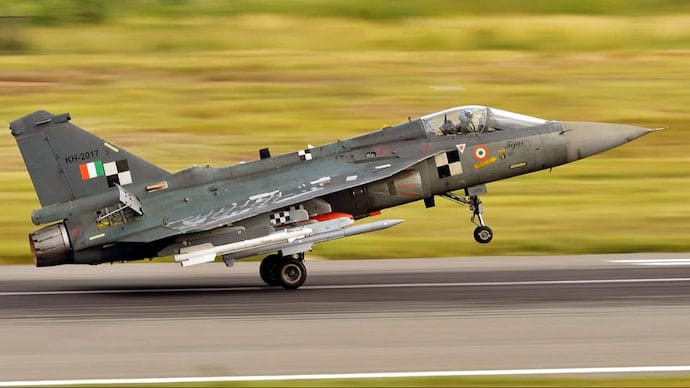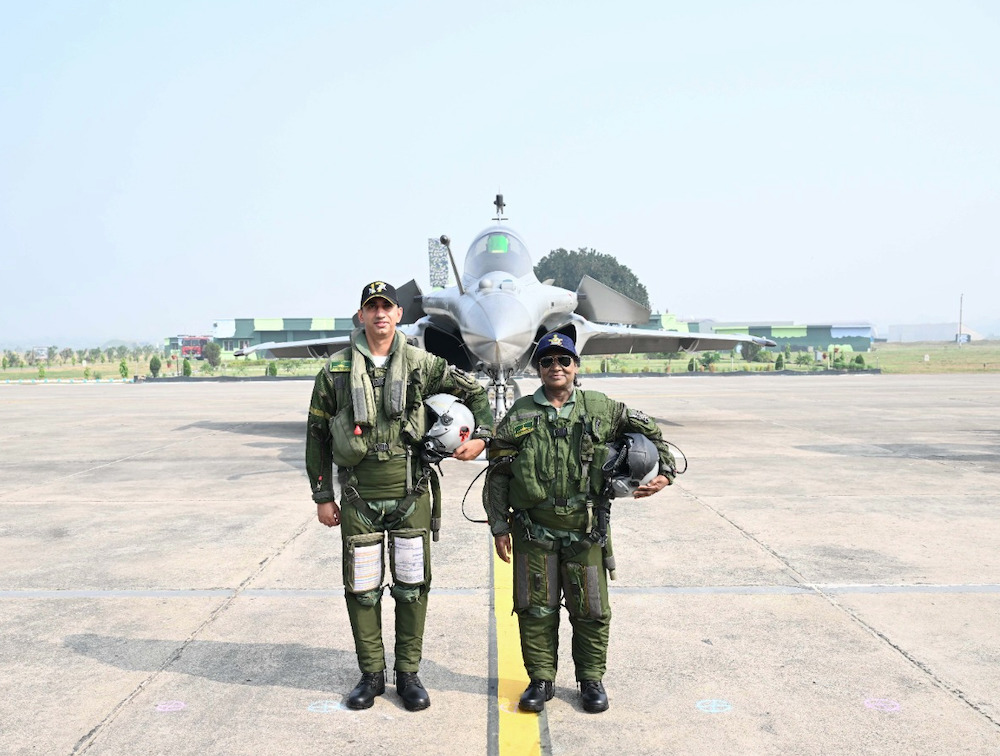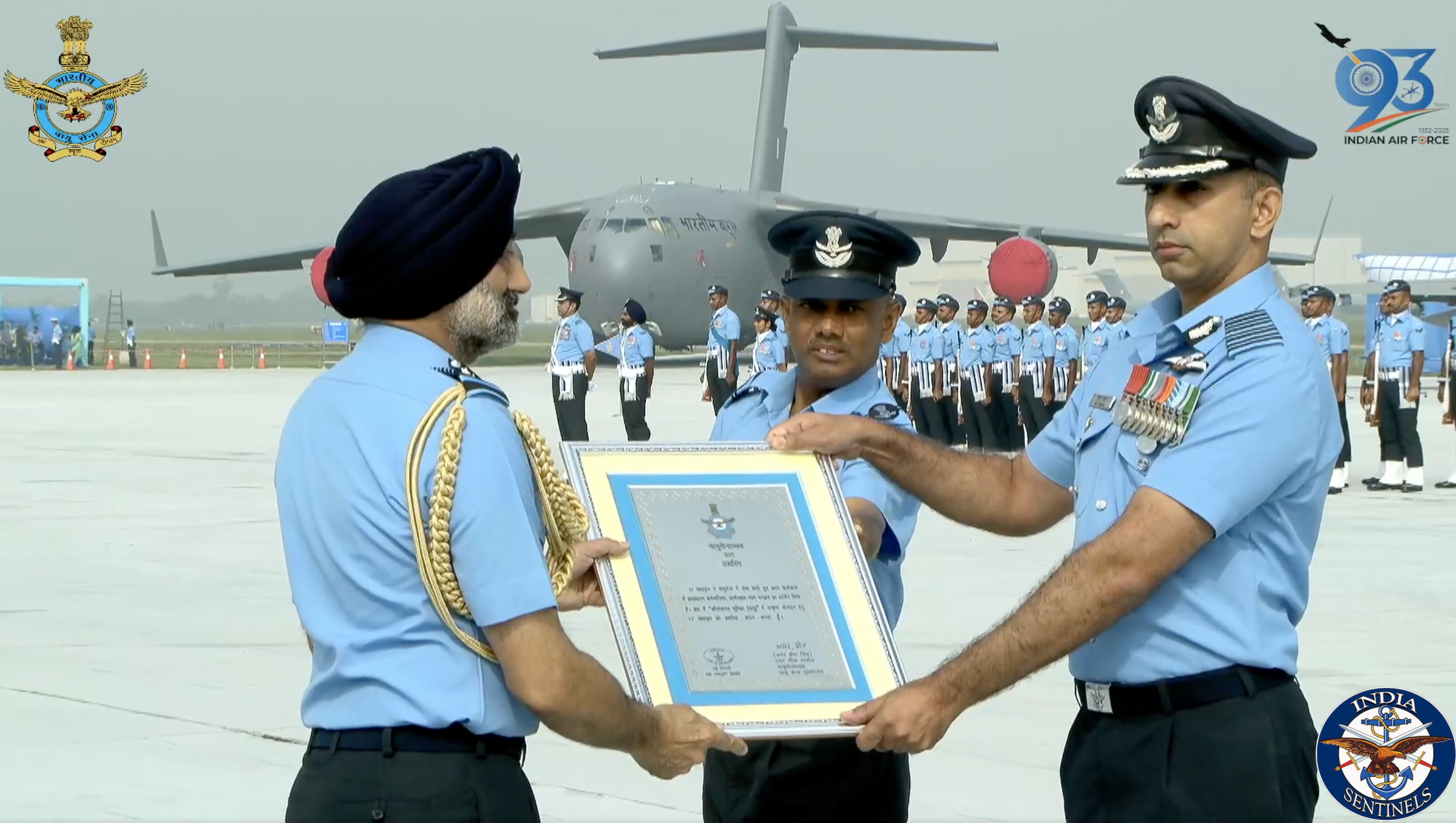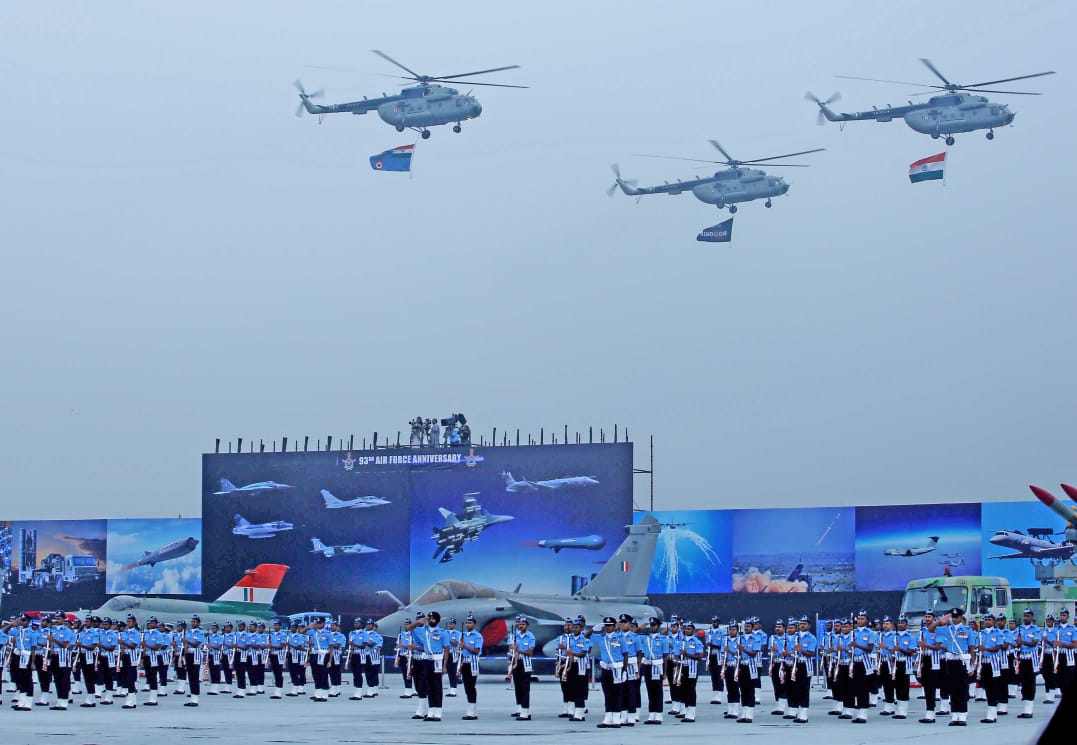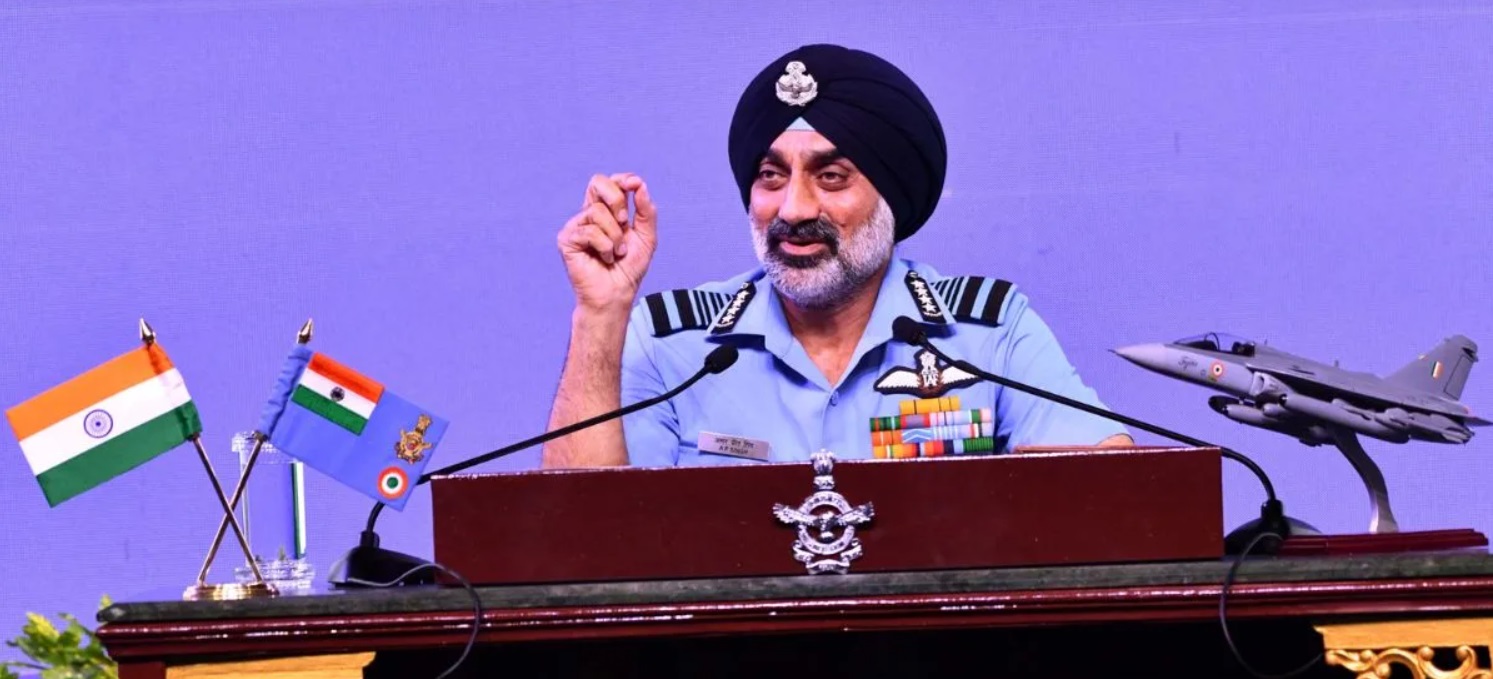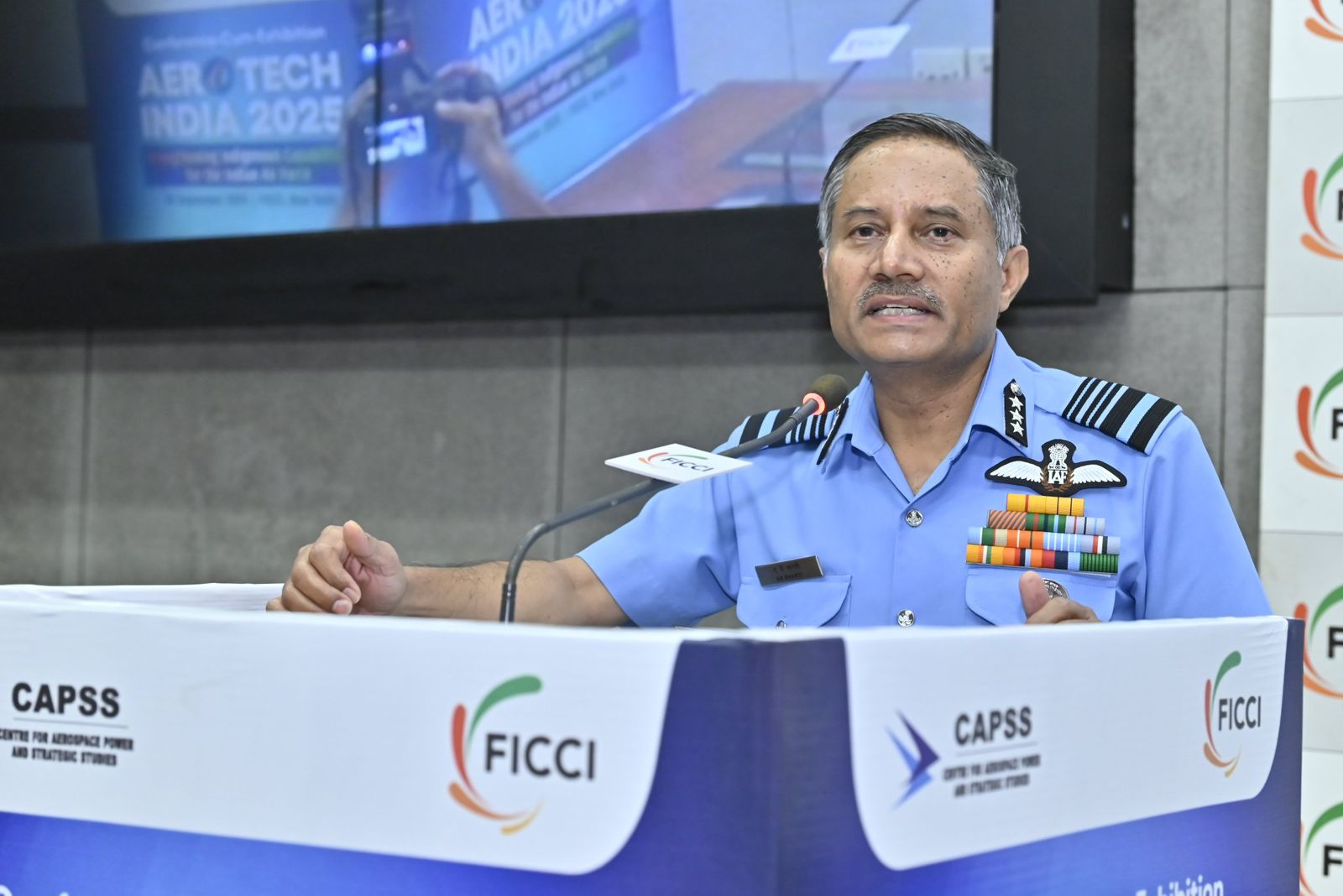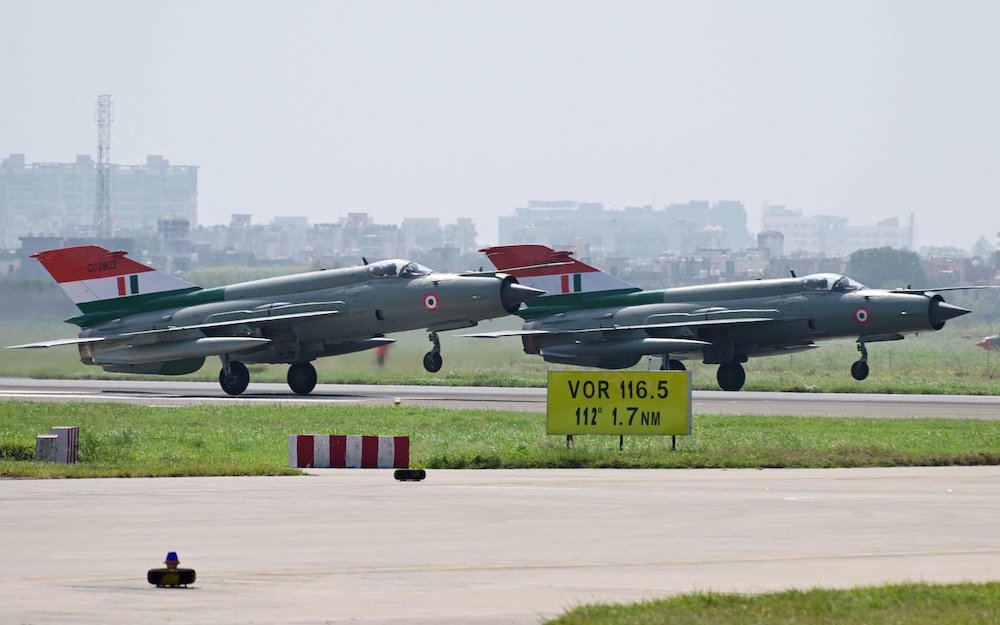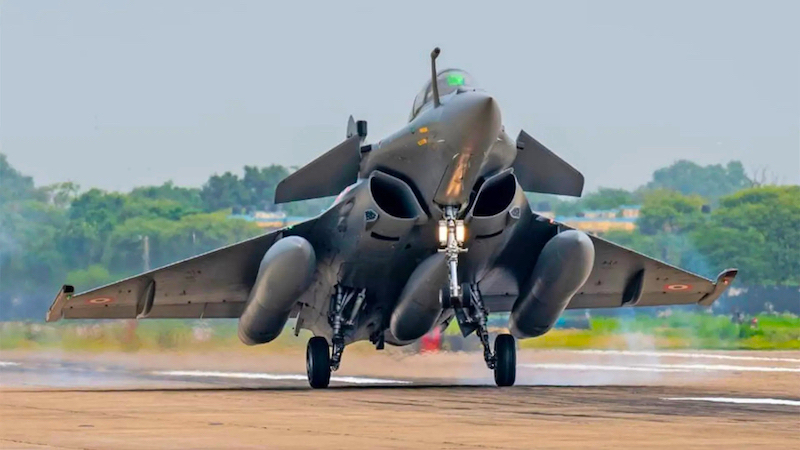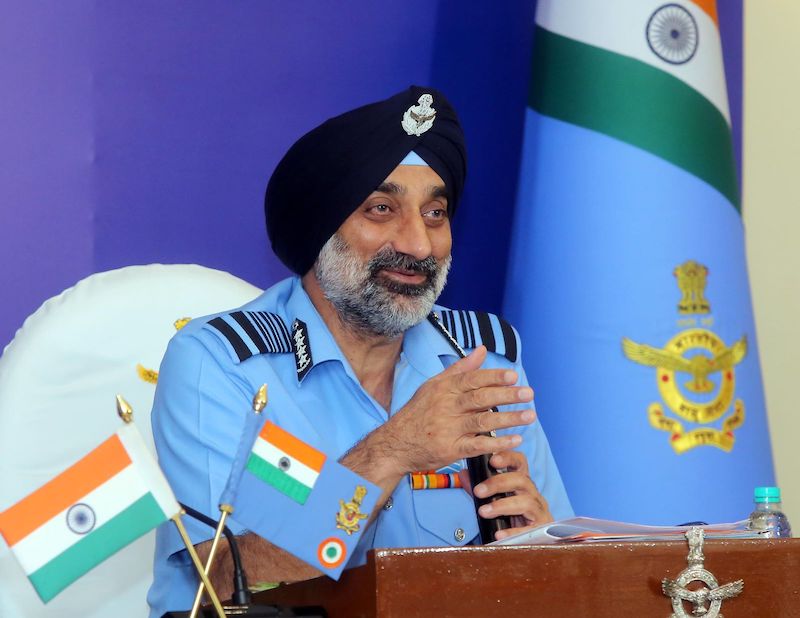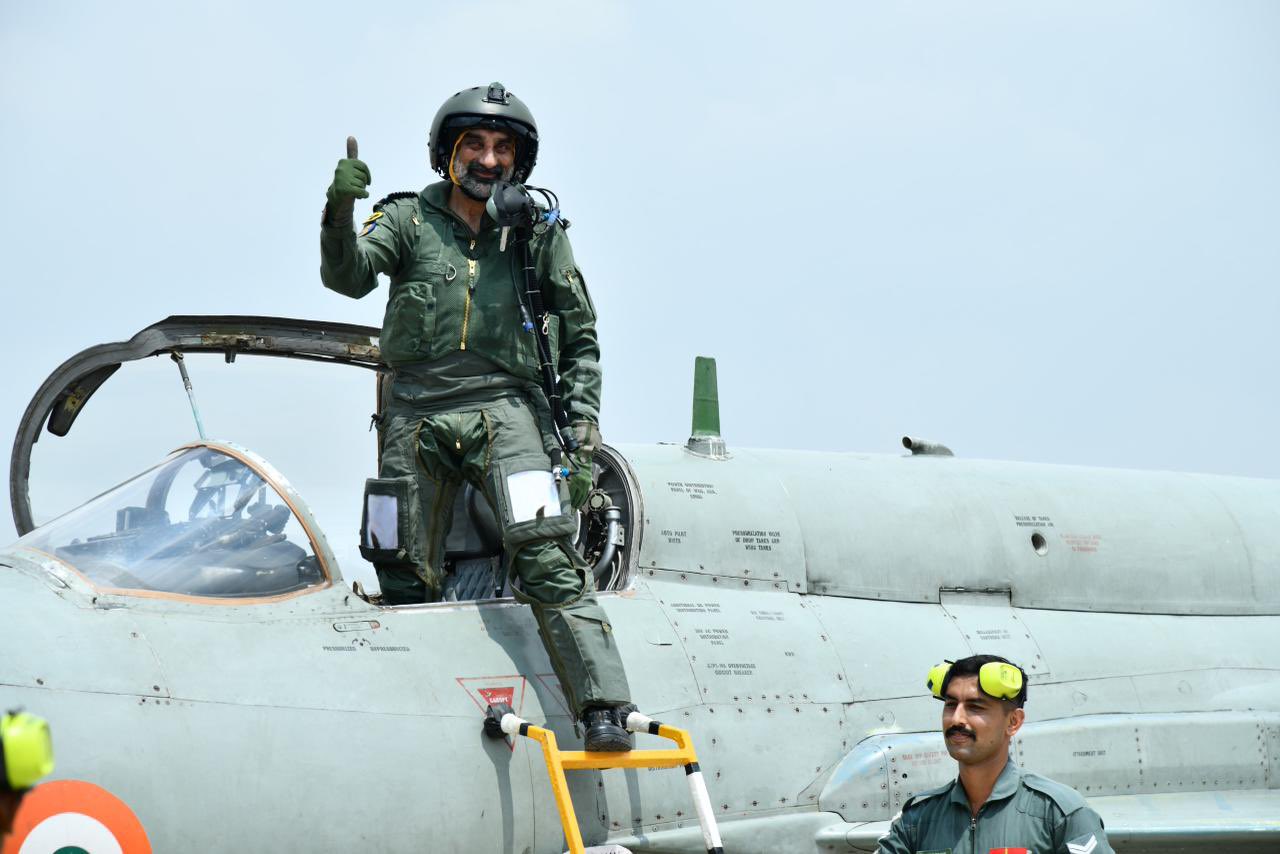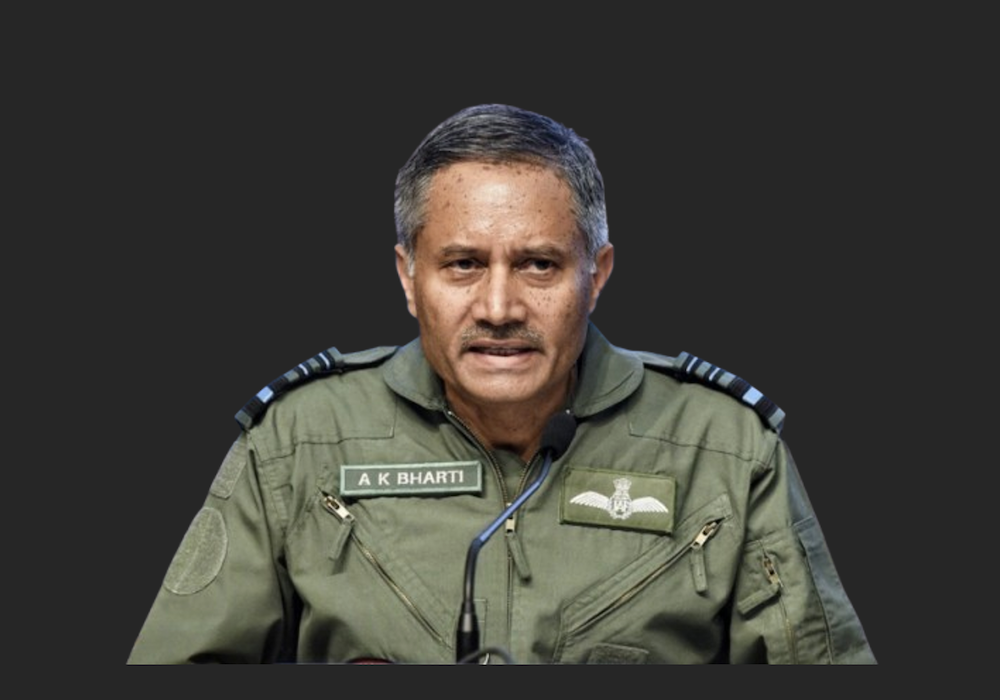 Air Marshal Awadhesh Kumar Bharti, DGAO, Indian Air Force.
Air Marshal Awadhesh Kumar Bharti, DGAO, Indian Air Force.
The skies over Pakistan fell silent in the predawn darkness of May 7, 2025. Then came the thunder.
Air Marshal Awadhesh Kumar Bharti, the director general of air operations of the Indian Air Force, had just unleashed what would become one of India’s most decisive military responses in decades. As the architect of “Operation Sindoor”, he transformed national grief into strategic action, first targeting terrorist strongholds across Pakistan and Pakistan-occupied Kashmir, then pivoting to neutralize Pakistan’s military assets when they dared to retaliate.
The precision airstrikes – striking nine critical targets simultaneously – showcased not just India’s technological prowess but its evolved doctrine of controlled aggression. Behind each calculated bombing run stood Bharti’s meticulous planning, a chess master moving pieces across a deadly board, sending an unmistakable message that reverberated through diplomatic corridors worldwide: India would no longer absorb punches without delivering a knockout response.
For AM Bharti, orchestrating this high-stakes aerial ballet represented merely the latest chapter in a distinguished four-decade career. His hallmarks – tactical brilliance honed by thousands of flight hours, ice-cold composure when seconds determined survival, and unflinching dedication to protecting India’s borders – had prepared him for precisely this moment of reckoning between nuclear powers.
Masterminding Operation Sindoor
Following the heinous attack on tourists in Pahalgam on April 22 that claimed 28 lives, AM Bharti was tasked with developing an appropriate military response. The operation, symbolically named “Sindoor” (vermillion) to avenge those who had “desecrated the sindoor of Indian women,” was the culmination of 12 days of meticulous planning and preparation.
“A decision was taken to strike where it would hurt,” AM Bharti explained during a joint press briefing of defence officials on May 12, 2025. “Towards that, in a swift, coordinated, calibrated attack, we struck Pakistan’s airbases, command centres, military infrastructure, and air-defence systems across the entire western front.”
The operation, launched on May 7, targeted nine sites identified as terrorist infrastructure across Pakistan and Pakistan-occupied Kashmir. Under Bharti’s direction, the IAF conducted precision strikes on multiple Pakistani airbases including Chaklala, Rafiq, and Rahim Yar Khan, followed by additional strikes at Murid, Sukkur, Sargodha, Bholari, Chunian, and Jacobabad. The strategic targets were selected to maximize impact while minimizing civilian casualties, reflecting Bharti’s characteristic approach of calculated force application.
Intelligence reports suggest that the planning phase involved continuous adaptation of strategy to keep Pakistani intelligence networks in a state of complete confusion. This approach exemplifies AM Bharti’s reputation for tactical innovation and operational secrecy.
When Pakistan attempted to retaliate by breaching Indian airspace with fighter jets, the IAF under AM Bharti’s command successfully repelled the intrusion. “Their planes were prevented from entering inside our border ... Definitely, we have downed a few planes ... Definitely, there are losses on their side which we have inflicted,” he confirmed in the press briefing, adding with evident pride that “all our pilots are back home.”
Images released by KAWASPACE, an Indian firm, showed significant damage at Pakistan’s Bholari airbase, with visible structural damage to hangars and debris scattered across the facility. When questioned about the mission’s success, AM Bharti responded with characteristic confidence: “Have we achieved our objectives of decimating the terrorist camps? The answer is a thumping yes, and the results are for the whole world to see.”
From Bihar’s Purnia to the Skies
Behind the decorated officer stands a story of humble beginnings in the heartland of Bihar. Born in Jhunni Kalan village in Purnia district to Jiwachh Lal Yadav and Urmila Devi, Awadhesh Kumar Bharti’s journey from a small town to directing India’s aerial operations reflects the possibilities that dedication and vision can unlock.
The establishment of a military airbase at Chunapur in Purnia following the 1962 India-China war played a pivotal role in shaping young Awadhesh’s aspirations. Growing up just 10 kilometres from Purnia town in Kosi Colony, where his father worked in the finance department of Kosi Irrigation Project, Bharti developed an early fascination with aircraft and flying.
“My visionary grandfather had a dream to see his grandchild soar in the skies,” recalls Dr Rajesh Kumar Bharti, the air marshal’s youngest brother and a noted medical practitioner in Purnia. “My grandfather was a strict disciplinarian and used to recite stories from the Ramayana and the Mahabharata every evening. He would take Awadhesh to all village fairs to make him aware of the rich heritage and roots and instilled in him the Indian ‘sanskars’ (good virtues).”
As the eldest among three brothers and a sister, Awadhesh learned responsibility early, a trait that would later characterize his leadership style in the Air Force. His brother Mithilesh Bharti remembers that Awadhesh “had that fire since childhood to serve the country by joining the armed forces.”
Educational Journey
AM Bharti’s academic journey began at Purnia Convent school, where he quickly distinguished himself as an exceptional student. His teachers, many of whom he still visits when in Purnia, remember him as one of their most brilliant pupils.
From Purnia Convent, he moved to Adarsh Madhya Vidyalaya in Parora, about 10 kilometres from Purnia town. His academic excellence and determination next took him to Sainik School Tilaiya (now in Jharkhand), a stepping stone that would prepare him for a military career.
The culmination of his early education came with his admission to the prestigious National Defence Academy (NDA) in Pune, where he continued his streak of excellence. At NDA, AM Bharti wasn’t just another cadet – he graduated as a topper of his batch and was awarded the coveted “Sword of Honour”, marking him as an officer of exceptional promise.
His thirst for knowledge and professional development didn’t end with his commissioning. Over his career, AM Bharti would go on to attend the Defence Services Staff College and the National Defence College, further honing his strategic thinking and leadership capabilities.
Rising Through the Ranks
Commissioned into the fighter stream of the Indian Air Force in June 1987, AM Bharti embarked on a career that would see him evolve from a skilled pilot to a strategic leader shaping India’s aerial defence doctrine.
Early in his career, AM Bharti established himself as an exceptional aviator, earning the designation of “fighter combat leader”, a mark of distinction that placed him among the IAF’s elite tactical minds. This qualification recognized his superior understanding of air combat tactics and ability to execute complex aerial manoeuvres – skills that would later inform his strategic decision-making as DGAO.
Throughout his nearly four-decade career, AM Bharti has accumulated over 5,000 hours of flying experience across various fixed and rotary-wing aircraft. His expertise and operational brilliance earned him two prestigious decorations: the Vayu Sena Medal (VM) and the Ati Vishisht Seva Medal (AVSM), recognizing his distinguished service to the nation.
His rise through the command hierarchy saw him holding various operational and staff appointments, each preparing him for greater responsibilities. As he advanced in rank, AM Bharti increasingly found himself involved in shaping IAF doctrine and strategy, particularly regarding the modernization of India’s aerial warfare capabilities.
Leadership Philosophy
Those who have served alongside AM Bharti describe a leader characterized by calm decisiveness, sharp analytical thinking, and unwavering focus under pressure – qualities that proved invaluable during Operation Sindoor and other high-stakes moments for the IAF.
His leadership philosophy appears to be built around three core principles: precision in planning, adaptability in execution, and unwavering focus on mission objectives. This approach was evident in his handling of Operation Sindoor, where complex strikes were carried out across multiple targets with minimal collateral damage and no loss of Indian personnel.
“The country will forever be indebted to our brave soldiers who made the ultimate sacrifice in the service of the motherland. Their extraordinary courage and selflessness inspire us to work towards making India a safe and prosperous nation,” reflects a sentiment that aligns closely with Bharti’s own commitment to national security and defence preparedness.
His operational approach reflects a balance between traditional military values and embracing technological innovation. Under his guidance as DGAO, the IAF has continued to evolve its capabilities to meet emerging threats, particularly in the domains of precision strike capacity and integrated air defence.
Stewarding India’s Air-Defence Strategy
As director general of air operations, AM Bharti occupies one of the most critical positions in India’s defence establishment. This role places him at the centre of planning and executing India’s air-combat operations and developing strategies to counter evolving threats from potential adversaries.
His tenure has coincided with a period of significant modernization and doctrinal evolution within the IAF. The successful execution of Operation Sindoor demonstrates how effectively he has stewarded this transformation, blending traditional principles of air power with contemporary approaches to multi-domain warfare.
The operation specifically highlighted several hallmarks of Air Marshal Bharti’s strategic thinking: the emphasis on precision over mass, the integration of intelligence with operations, and the calibrated application of force to achieve clearly defined objectives. These elements have become increasingly central to IAF doctrine under his guidance.
In presenting evidence of the operation’s success, Air Marshal Bharti showcased not just the physical damage inflicted on enemy infrastructure but also emphasized the strategic messaging: “This was followed by strikes at Sargodha, Bholari, and Jacobabad – sending a clear message that aggression will not be tolerated.”
Managing Escalation
Perhaps one of the most delicate aspects of AM Bharti’s role has been managing the complex dynamics of India-Pakistan military confrontations. Operation Sindoor required not just military precision but diplomatic sensitivity, ensuring that legitimate counterterrorism objectives were achieved without triggering uncontrolled escalation.
When Pakistan attempted to breach Indian airspace following Operation Sindoor, Air Marshal Bharti’s forces executed an effective defence while maintaining proportionality in response. The downing of several Pakistani aircraft demonstrated resolve without overreaching into actions that might have further inflamed tensions.
The ceasefire that followed brought escalating hostilities to a standstill, though the situation remains tense. This pattern of controlled response followed by de-escalation reflects a mature strategic approach that recognizes the unique challenges of conducting military operations between nuclear-armed neighbours.
Man Behind the Uniform
Despite his elevated status in India’s defence establishment, AM Bharti maintains strong connections to his roots in Bihar. His periodic visits to his former schools in Purnia, where he interacts with faculty and students, reveal a leader who values the formative influences in his life.
Colleagues describe a leader who combines professional excellence with personal humility – someone whose decisions are guided by a deep sense of duty rather than personal ambition. This grounded nature likely originates from the fundamental values his grandfather instilled in him through daily lessons on Indian cultural heritage, sharing wisdom from ancient epics like the Ramayana and Mahabharata.
Though intensely private about his personal life, it’s evident that family connections remain important to him. The pride expressed by his brothers Mithilesh and Dr Rajesh when discussing his achievements suggests a close-knit family that continues to celebrate each other’s successes.
Legacy and Influence
At this juncture in his distinguished career, Air Marshal AK Bharti has already secured a significant place in the history of the Indian Air Force. His leadership during Operation Sindoor will likely be studied by future generations of military officers as an example of effective aerial campaign planning and execution.
Perhaps more importantly, his journey from a small town in Bihar to the highest echelons of India’s defence establishment serves as an inspiration, particularly to young people from similar backgrounds with aspirations of serving the nation. His story embodies the possibility that talent, determination, and patriotism can overcome humble beginnings.
As the Indian Air Force continues to evolve in response to regional security challenges and technological developments, the strategic vision and operational philosophy that AM Bharti has helped shape will influence its trajectory for years to come. His emphasis on precision, adaptability, and measured response has contributed to a more sophisticated and nuanced approach to the application of air power in the Indian context.
Air Marshal Awadhesh Kumar Bharti’s leadership of Operation Sindoor represents the culmination of a lifetime dedicated to India’s aerial defence. From his early days in Bihar’s Purnia district to directing one of the world’s most significant air forces during critical operations, his journey illustrates the impact that determined leadership can have on national security outcomes.
As India navigates complex regional security dynamics, the strategic acumen and operational expertise that AM Bharti brings to his role as director general of air operations provide crucial capabilities to the nation’s defence apparatus. The successful execution of Operation Sindoor, with its precise targeting and clear achievement of objectives, demonstrates the evolution of India’s military response options under his guidance.
While the full historical assessment of his contributions will emerge only with time, it is already clear that Air Marshal Bharti has earned his place among the distinguished military leaders who have helped shape India’s defence posture in the 21st century. His combination of tactical brilliance, strategic vision, and unwavering commitment to national security continues to serve India as it faces evolving challenges in an increasingly complex security environment.

